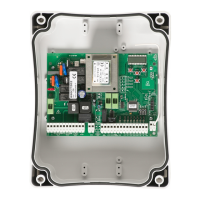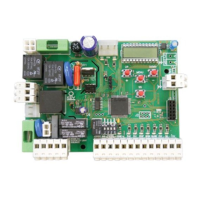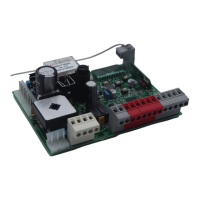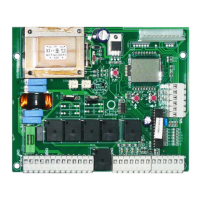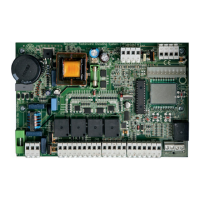EN
17
Once all (and not just some) of the system devices have passed the
testing procedure, the system can be commissioned;
the system’s technical dossier must be produced and kept for 10
years. It must contain the electrical wiring diagram, a drawing or
photograph of the system, the analysis of the risks and the solutions
adopted to deal with them, the manufacturer’s declaration of con-
formity for all connected devices, the operator’s manual for every
device and the system maintenance plan;
x a dataplate with the details of the automation, the name of the
person who commissioned it, the serial number and year of con-
struction and the CE marking on the gate or door;
also t a sign specifying the procedure for releasing the system by
hand;
draw up the declaration of conformity, the instructions and precau-
tions for use for the end user and the system maintenance plan and
consign them to the end user;
ensure that the user has fully understood how to operate the system
in automatic, manual and emergency modes;
the end user must also be informed in writing about any risks and
hazards still present;
WARNING !
after detecting an obstacle, the gate or door
stops during its opening travel and automatic closure is disabled;
to restart operation, the user must press the control button or use
the transmitter.
All system components must be tested following the procedures de-
scribed in their respective operator’s manuals;
ensure that the recommendations in Chapter 1 - Safety Warnings -
have been complied with;
check that the gate or door is able to move freely once the automa-
tion system has been released and is well balanced, meaning that it
will remain stationery when released in any position;
check that all connected devices (photocells, safety edges, emer-
gency buttons, etc.) are operating correctly by performing gate or
door opening, closing and stop tests using the connected control
devices (transmitters, buttons or switches);
perform the impact measurements as required by the EN12453
standard, adjusting the control unit’s speed, motor force and de-
celeration functions if the measurements do not give the required
results, until the correct setting is obtained.
The system must be tested by a qualied technician, who must
perform the tests required by the relevant standards in relation to
the risks present, to check that the installation complies with the
relevant regulatory requirements, especially the EN 12453 standard
which species the test methods for gate and door automation sy-
stems.
22
BOOST SETUP
If active, it provides maximum acceleration upon starting
0 = disabled
1 = active
0 0 1
23
DELAY LEAF1
Leaf delay relating to M1 in closing from open gate. 1 0 20
s
24
ENCOD SETUP
Sets the encoder type
0 = virtual encoder
1 = physical encoder
NOTE: the value depends on the type of motor selected.
0 0 1
25
MOTOR SETUP
Determine the type of automation on which the control unit is
installed:
1 = RAY2224,
2 = REP2224,
3 = UND24,UND24E*
4 = STAR3024 - STAR2024,
5 = RAY4224E*
1 1 4
* Available on CT20324E and CT20324EL only. For UND24E, manually set
ENCOD SETUP
to 1.
6 - TESTING AND COMMISSIONING THE AUTOMATION SYSTEM
6.1 - Testing
6.2 - Commissioning

